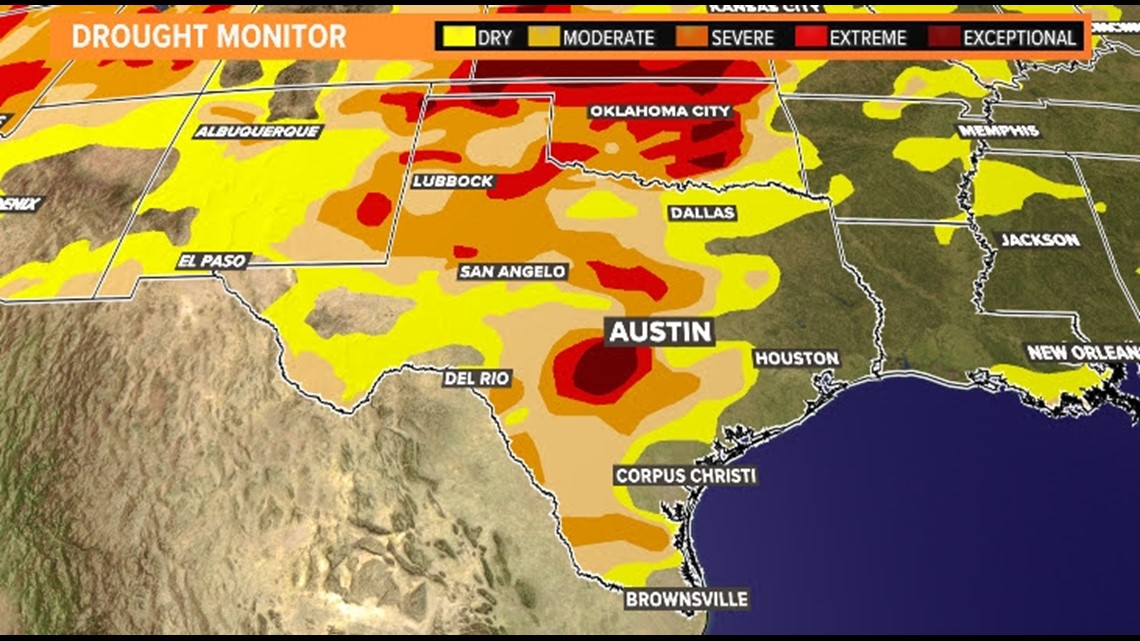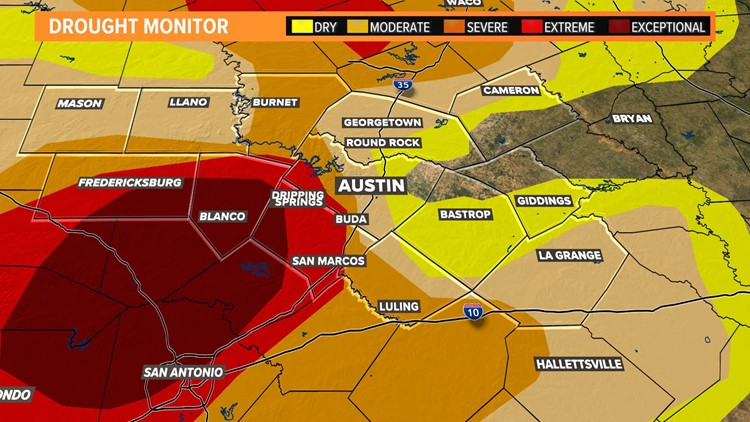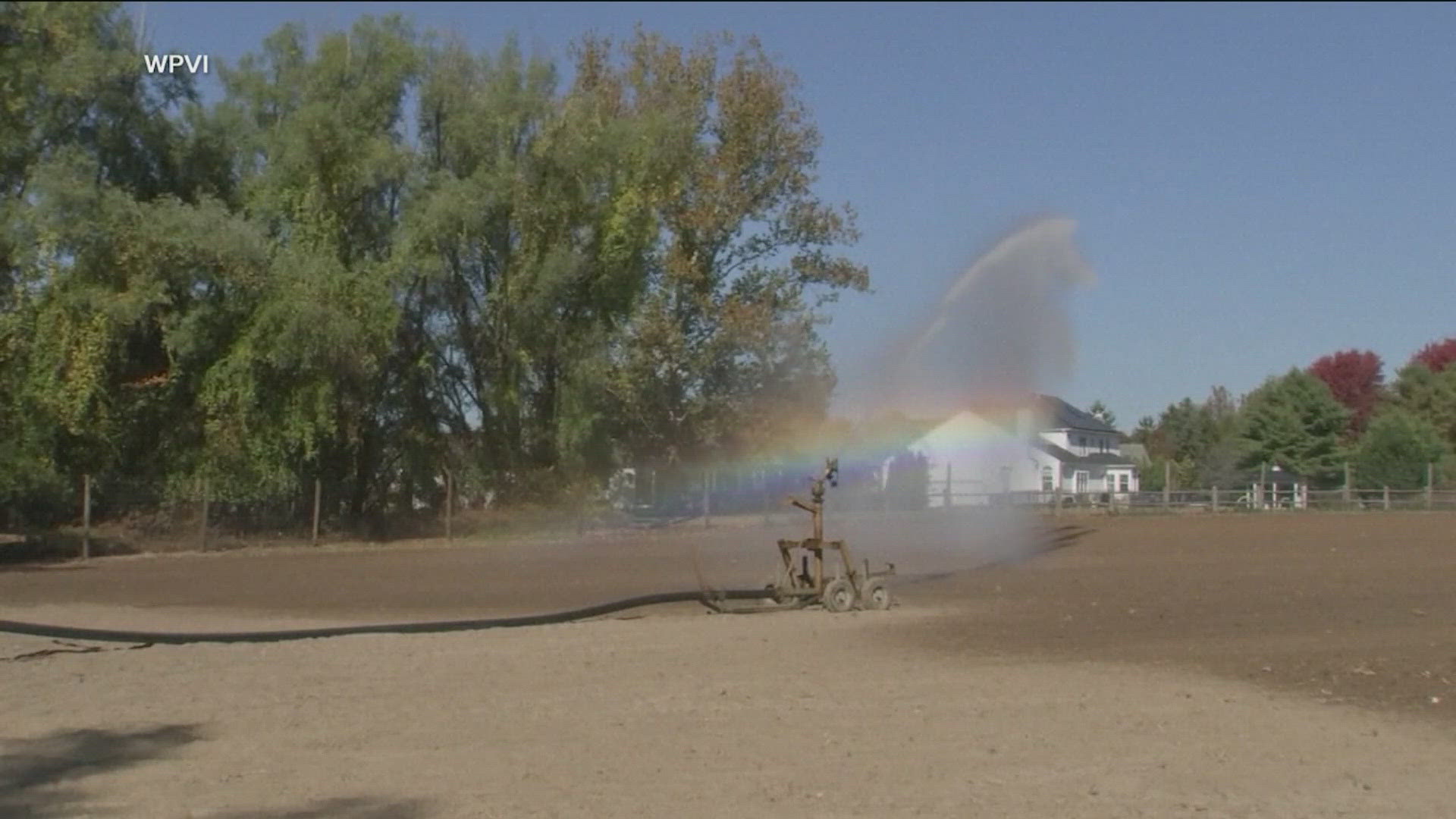AUSTIN, Texas — An upper-level low-pressure system brought a plethora of weather conditions to the Lone Star State on Tuesday.
Neighborhoods in North Texas experienced accumulations of snow, while areas closer to Central and East Texas were bombarded with rain.

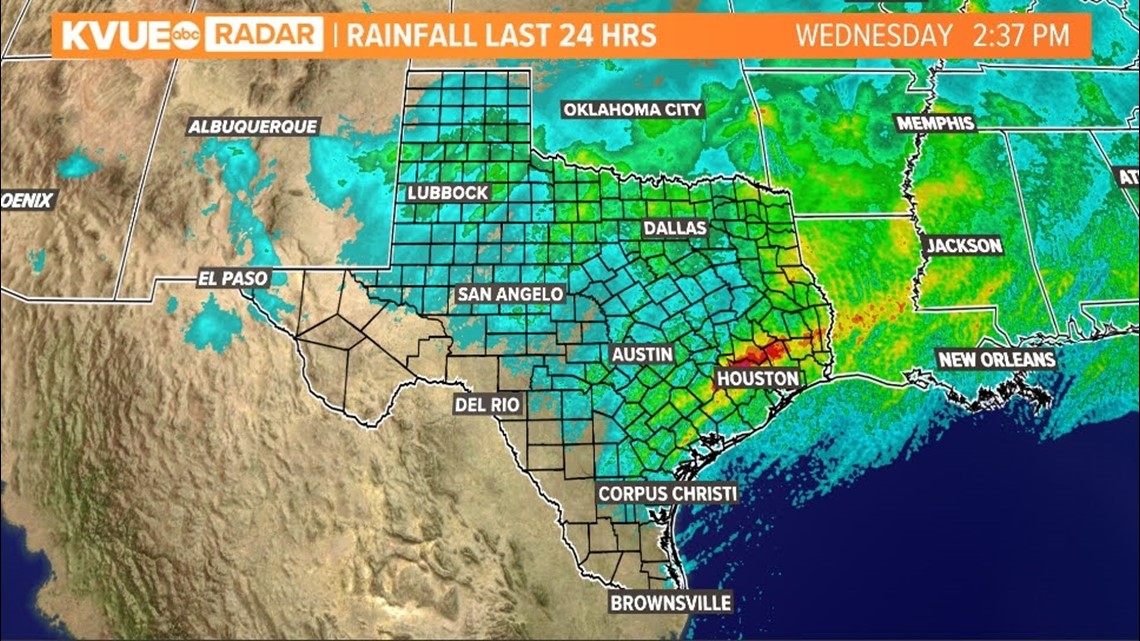
Counties northeast of Houston recorded the greatest of these accumulations. The National Weather Service reported totals just shy of 5.5 inches in San Felipe and Tomball. But it's not East Texas that is in need of all that moisture.
Closer to home, the southwestern corridor of Central Texas – Hays, Blanco and Gillespie counties – has been in the "exceptional drought" category since mid-April of 2022. That's the highest rank issued by the U.S. Drought Monitor.

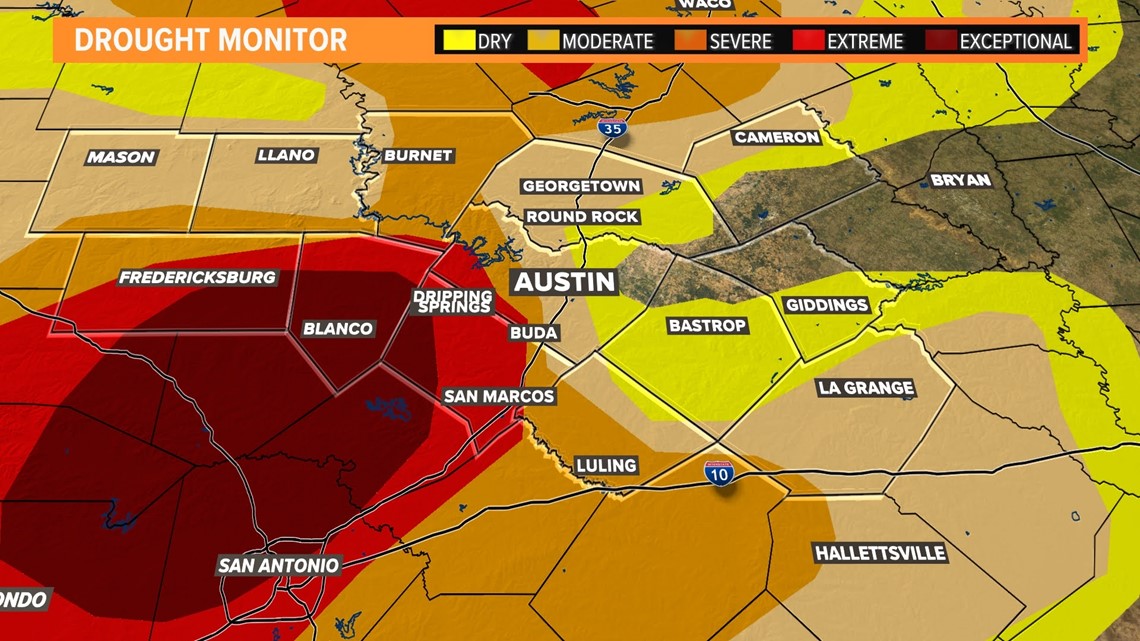
While the Central Texas region didn't see 5 inches of rainfall on Tuesday, widespread precipitation totals were high enough that the area should experience at least minor relief in isolated areas.

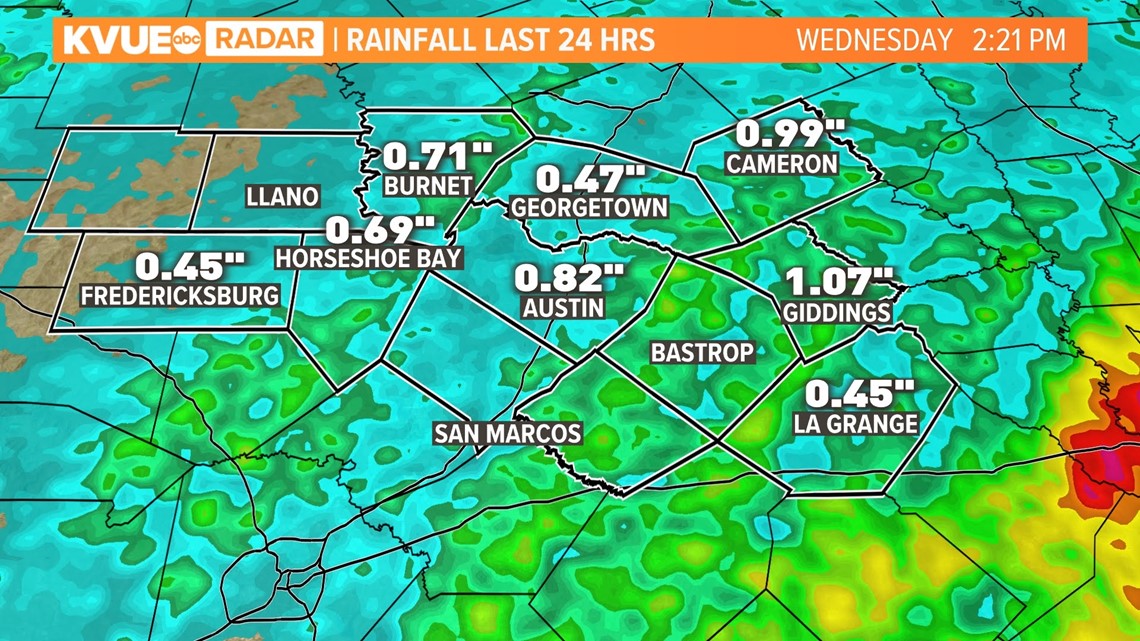
The highest rainfall recordings were generally east of Interstate 35 but were also observed in portions of Burnet, Blanco and Kendall counties, where drought rankings are "extreme" to "exceptional" across the board.

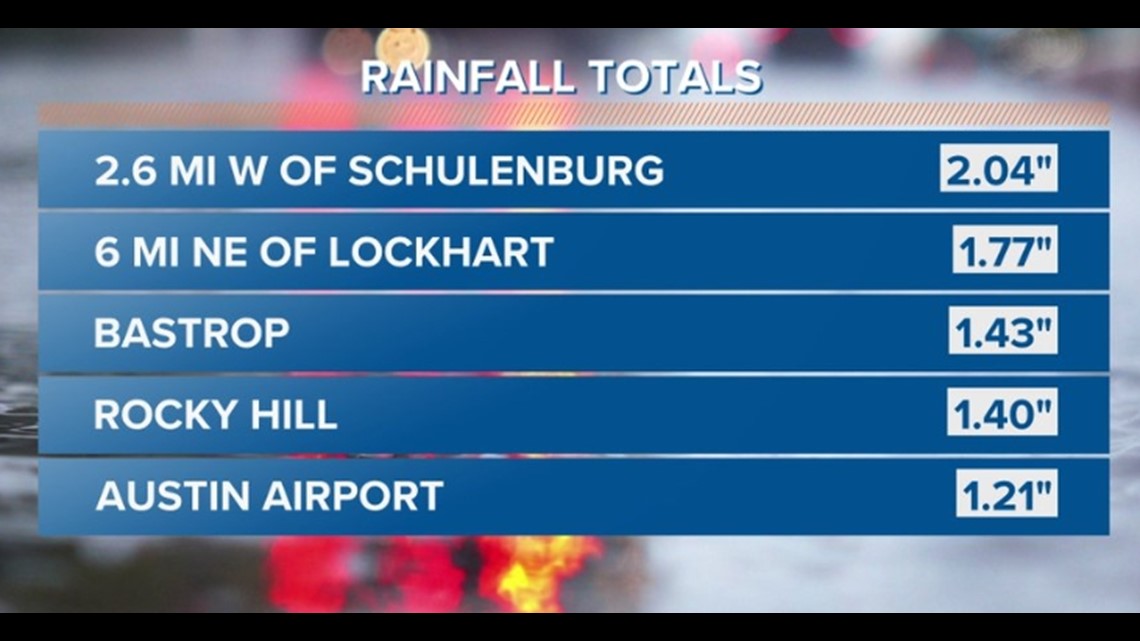
But is 2 inches enough to reverse drought? The short answer is no.
According to the National Oceanic and Atmospheric Association (NOAA), about 10 to 12 inches of rainfall is needed across Central Texas in order to reverse drought in one month's time.

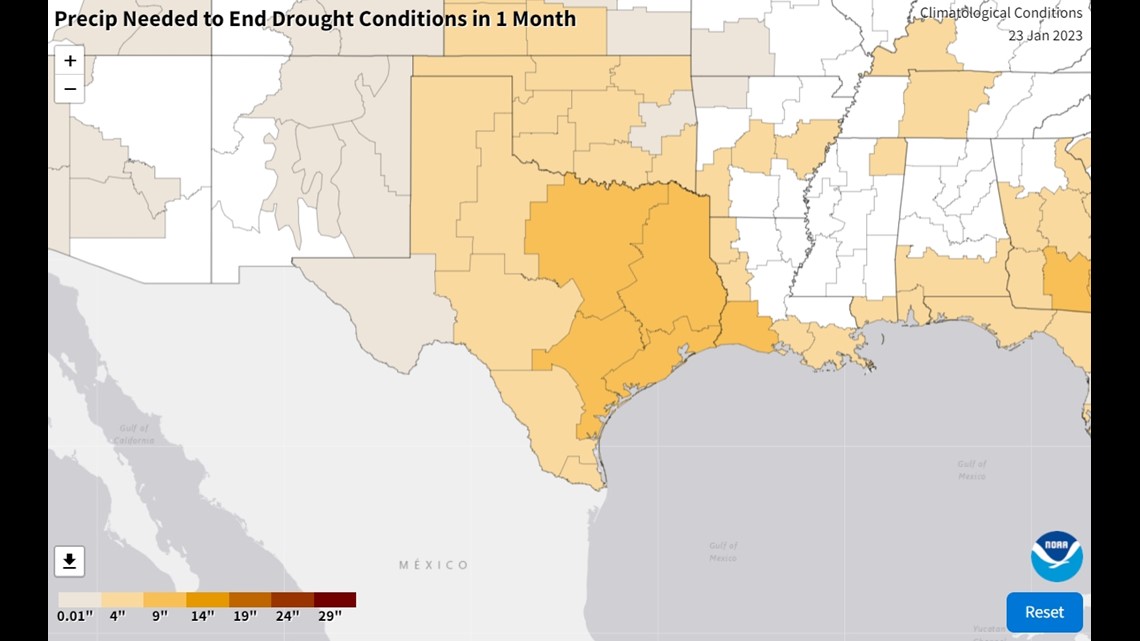
By the end of February, if Central Texas is tacking on consistent rainfall events with a half-inch to 2 inches of widespread precipitation coming in, it is possible the region could see a significant easement of drought.
However, there isn't high confidence in that outcome.


The Climate Prediction Center is anticipating another near-average to below-average month, precipitation-wise. But hopefully, a change is coming.
Looking ahead, climatologists at NOAA are expecting that current La Niña conditions, which have brought a generally warm and dry pattern to the southern U.S. for the past three years, are expected to switch back to El Niño come spring.
El Niño generally brings a cooler, wetter pattern to the southern U.S., meaning the near-term forecast for drought relief in Texas could be looking better come March and April.
For those interested in updates on the Central Texas drought, the National Drought Monitor is updated every Thursday.

